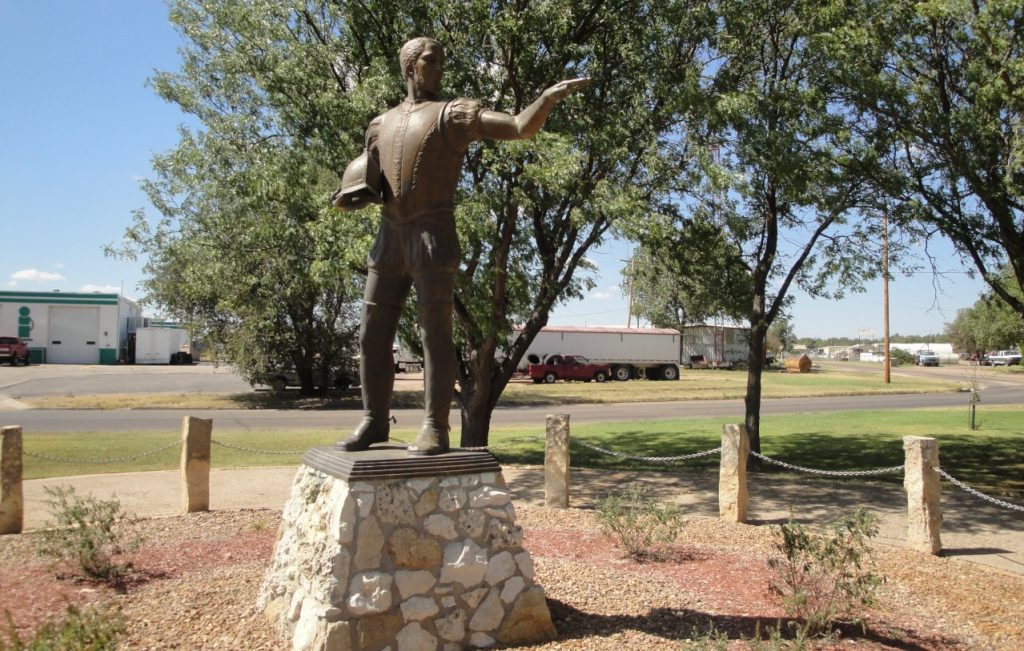
You don’t know open space if you live on the coasts. The middle of America has a lot of emptiness. They called it the sea of grass and the metaphor is apt. In many places the land here is as featureless as the sea. Above is a landscape near Perryton, Texas.

I am interested in the high plains. The Spanish explorer Francisco Coronado (his statue is above in Liberal, Kansas) named it the Llano Estacado, which means palisaded plains. There is some disagreement about what he was describing, but the most accepted explanation is that the plateau starts with escarpments that look like fortification palisades or a stockade. I didn’t see this “fortified” part, since I came from the north, where it is less abrupt.
I have been listening to the audio book Empire of the Summer Moon, about the rise and fall of the Comanche. The Comanche were primitive and not very successful Indians until horses came to the Great Plains after they escaped from the Spanish. They quickly learned to use the horse and it changed their tribe. The mobility provided by the horse allowed them to kick other tribes, mostly Apaches, off the Llano Estacado in what would be called a genocidal war if it happened these days. Like most horse nomads, the Comanche were violent and cruel. Their main passion was raiding, which included lots of torture, rape and pillaging. It was essentially a type of terrorism designed to … well terrorize opponents.
The Comanche were a formidable fighting force. They stopped the Spanish conquests and held back the Mexicans. One reason why the Mexicans welcomed Americans settlers in Texas was that they wanted a buffer against the Comanche. Nobody could really cope with them until the Texas Rangers learned to fight in the mobile and flexible fashion used by the Comanche themselves. It takes a network to defeat a network. The revolver was a great help in fighting the plains Indians. An Indian with a bow enjoyed an advantage over a man armed with a single shot rifle or pistol. The six-shooter evened the odds. The U.S. Cavalry finally defeated the Comanche in the 1870s, mostly by sheer persistence helped by the destruction of the buffalo herds.

Above is the marker for the battle of Adobe Walls. There were two of them here. During the second battle the Comanche were attacking buffalo hunters holed up in an adobe inn. Although there were 700 Indians and only 29 hunters, this was a bad idea. The Indians couldn’t burn the hunters out, since adobe doesn’t burn and the hunters were well armed with long-range rifles. They were able to shoot the Indians at very long distance. Read about it in the book I mentioned.
Dealing with the tribes reminded me of the tribal diplomacy in Iraq and defeating the Comanche “insurgency” probably still has lessons for us today. Anyway, it is a good book and I recommend it, especially the audio version that you can listen to in the car as you drive across the endless sea of grass where the Comanche used to ride.
I have more pictures and thoughts re the high plains and will post more. It was a good day to look around.
